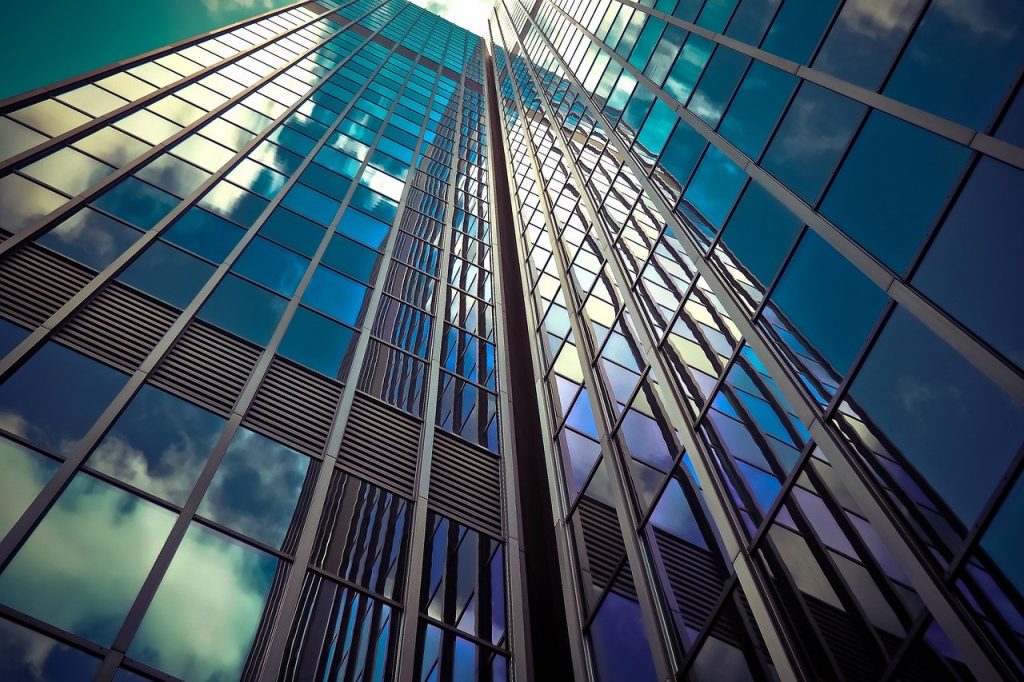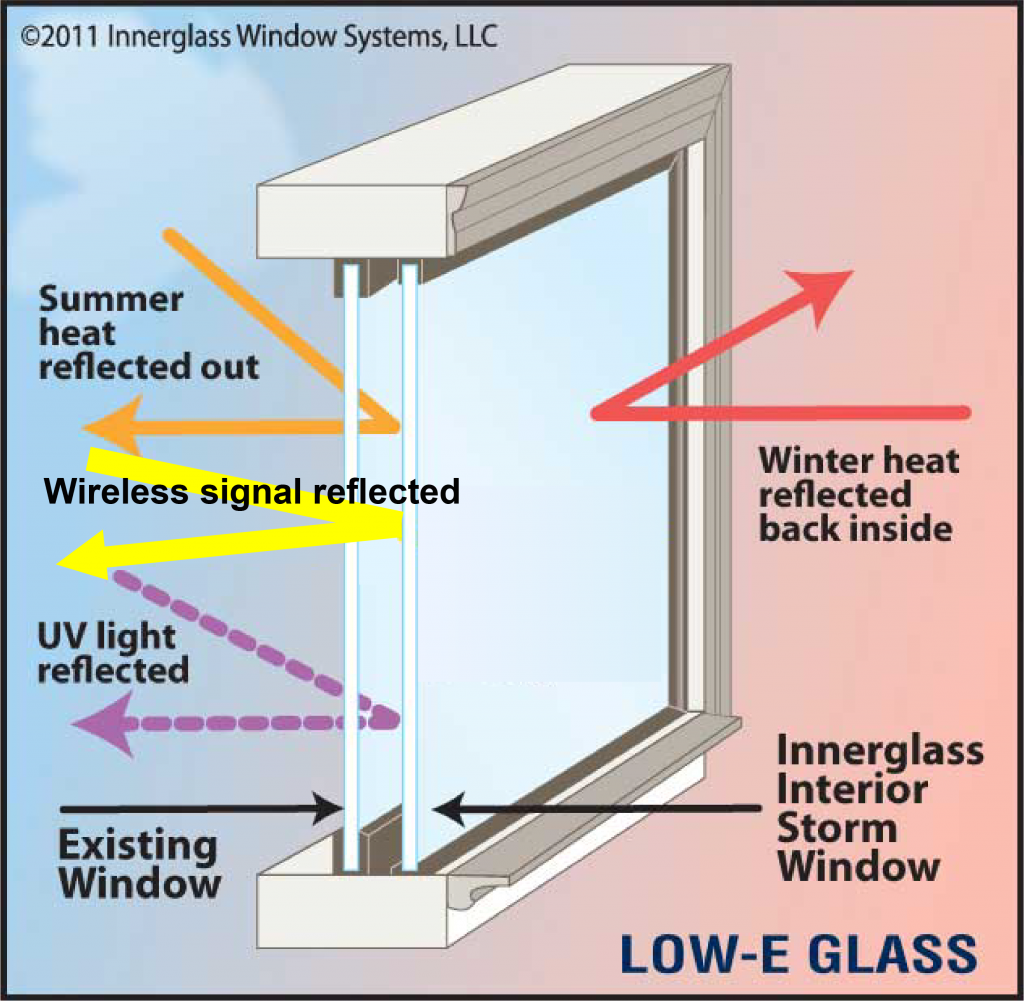By Andrew Wright
Working in a BREEAM-certified building can be a pleasure for Boost Pro Systems because such buildings are designed and constructed with sustainability and the health and safety of occupants first and foremost. However, a very common problem is a clear drop in mobile phone reception, commonly caused by the use of low-emissivity (low-E) glass in the buildings’ construction. In this article, I will discuss the necessity of using low-E glass, how it affects the radio frequencies used to transmit mobile phone signal, and how a DAS (Distributed Antenna System) can be used to mitigate the effects.
Benefits of using Low-E Glass
Low-E glass uses a coating that minimises the energy passing through it. There are two different coatings used: Hard-coat low-E glass uses a metallic coating, applied to the surface of the glass. This coating is mostly used in colder climates, as it allows some heat from the sun to pass through and support the heating of the building. Soft-coat low-E glass uses a silver lining between panes of glass, however is much more expensive. It tends to be used in warmer climates and is designed to minimise air conditioning running costs by reducing heat transmission into buildings.

Low-E glass is an integral part of the construction of modern buildings, where the Building Research Establishment Environmental Assessment Method (BREEAM) system dictates much of the design process. The BREEAM system rates a building based on how environmentally friendly it is. A higher rating will ensure lower running costs and also yield significant tax benefits.
The Effects of Low-E Glass on Mobile Phone Reception
Unfortunately, BREEAM ratings does not consider the negative impact that low-E glass causes in an increasingly technological world. As low-E glass reflects energy and improves the building’s insulation, it also reflects transmissions from mobile phone towers. This prevents radio frequencies from penetrating the glass and entering / exiting the building. This results in very poor in-building coverage.

Installing a DAS (Distributed Antenna System) Solution
Boost Pro Systems’ DAS deployments alleviate the issue of poor coverage by using a network of indoor antennas spread throughout the building. An external donor antenna is used to supply the signal to the indoor antennas through media such as cat 6 cabling. Users can be served directly by antennas within the building rather than making do with poor reception from signals having to travel through low e glass windows. Users gain the energy efficiency of low-E glass and the benefits of a high BREEAM rating without suffering from intermittent coverage and disappearing bars on their phones. They can achieve their goal of owning and working in a sustainable, environmentally friendly building without negatively affecting their modern lifestyles.
Find out more about our DAS solutions
To find out more about Boost Pro Systems DAS technology please email andrew@boostprosystems.com. Be sure to also check out our FAQ and Mobile Signal Booster Case Studies for further information.
